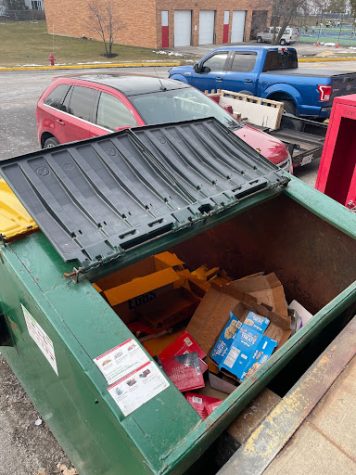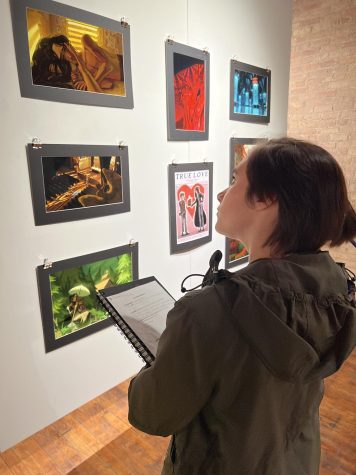Distribution of COVID-19 vaccine begins around the world
The Centers for Disease Control and Prevention (CDC) reports that 23.5 million doses of the COVID-19 vaccine have been administered across the U.S. as of Jan. 25. The CDC website said,“It’s important for everyone to continue using all the tools available to help stop this pandemic as we learn more about how COVID-19 vaccines work in real-world conditions. Cover your mouth and nose with a mask when around others, stay at least 6 feet away from others, avoid crowds, and wash your hands often.”
January 29, 2021
After almost a year of living under restrictions to stop the spread of the novel coronavirus, distribution of COVID-19 vaccines has begun– signaling to many a positive development in the fight against the pandemic. The Pfizer and Moderna vaccines are the first vaccines available and are currently being distributed to healthcare workers and at-risk populations around the world.
“I spent most of my time this year working with colleagues at the foundation and around the world on ways to test for, treat, and prevent COVID-19,” stated Bill Gates in a Dec. 22 post titled “These breakthroughs will make 2021 better than 2020,” which was published on his blog called “GatesNotes.” “When I think back on the pace of scientific advances in 2020, I am stunned. Humans have never made more progress on any disease in a year than the world did on COVID-19 this year. Under normal circumstances, creating a vaccine can take 10 years. This time, multiple vaccines were created in less than one year.”
The Pfizer and Moderna vaccines need two doses in order to ensure best chances at immunity. According to the Centers for Disease Control and Prevention, they are both around 95 percent effective at preventing COVID-19.
Both vaccines use mRNA technology, which means they contain “material from the virus that causes COVID-19, which gives our cells instructions for how to make the protein unique to this virus. Our cells are able to make copies of this protein and then build lymphocytes to remember how to fight the virus off if we are infected in the future,” Biology Teacher Jamie Brongiel said. “The vaccine does not contain a ‘live’ coronavirus that is being injected into you.”
Due to the speed at which these vaccinations were tested and approved, misconceptions about the vaccines have spread. Some bought into conspiracies that said the vaccine was actually a microchip or generally unsafe.
“The public distrust has to do with the misconceptions already mentioned and the speed with which those misconceptions make it onto Facebook, Twitter and other social media platforms,” Biology Teacher Jed Doyle said. “It also stems from the fact that a large chunk of the population does not know how to think critically and analyze data for themselves.”
The actual reason for the vaccine’s rapid manufacture comes down to the fact that it is in such high demand– making its development a priority for companies. Gates said that the mRNA vaccines have also made it to market first because “by design, this type of vaccine can be created faster than conventional ones.” More vaccines of a different type are still, however, on their way from other companies.
“An example of a different type of vaccine is the one made by AstraZeneca. Instead of using mRNA, it attaches the spike protein to an otherwise benign virus that causes the common cold in chimpanzees but is harmless for humans. Then your immune system learns to attack that spike, and you’re protected from COVID-19,” Gates said. “In its clinical efficacy trials, the AstraZeneca vaccine was on average around 70 percent effective, versus 94 to 95 percent for the Pfizer and Moderna vaccines. But 70 percent is still high enough to be effective at stopping the disease. And it’s reason to be hopeful about other vaccines that take a similar approach, such as Johnson & Johnson’s.”
Having so many companies working on the same disease is unheard of, but may speed up the process of achieving herd immunity– when enough of a population is immune from a disease to stop it from spreading.
“Herd immunity is different for different diseases. In general, somewhere between 80 and 90 percent of people will need to be immune before herd immunity kicks in. That is because herd immunity only works when the virus doesn’t have anywhere to hide,” Doyle said. ” It isn’t really known what percentage of immune people would be required for COVID, but measles requires about 95 percent of the population to be vaccinated.”
To achieve the number of people vaccinated necessary to stop the spread of COVID-19, Gates predicted that 5 billion doses need to be given under a one-dose model, and 10 billion for a two-dose model. Gates added this means that all hands must be on deck in order to meet demand and to distribute the supply across the globe. The collaboration of so many different companies was necessary to make it happen.
“Last spring, when the extent of the COVID-19 pandemic was becoming clear, I wrote that ‘this is like a world war, except in this case, we’re all on the same side.’ I am glad to report that the optimistic view that the world would come together to fight COVID-19 has largely turned out to be right (with some notable exceptions),” Gates said. “There’s no way we would be as far along as we are if governments, companies, and scientists around the world weren’t, more often than not, working closely together.”
In order to stop the pandemic, though, experts are encouraging more than the cooperation of companies. Experts have been advocating for every-day citizens to do their share. This means that everyone needs to continue social distancing, wearing masks, and taking the vaccine if medically able to when it becomes available to them.
“I actually cannot wait to get [the vaccine],” Brongiel said. “We still don’t know so much about the long-term effects of the disease, and so I know any of those long-term effects will be much more serious than any short-term effects of a vaccine.”
Many view the vaccine as a huge step in curbing the spread of COVID-19, and with this level of worldwide cooperation, Gates sees a major shift toward normalcy coming in 2021.
Gates said, “In the spring of 2021, the vaccines and treatments you’ve been reading about in the news will start reaching the scale where they’ll have a global impact. Although there will still need to be some restrictions (on big public gatherings, for example), the number of cases and deaths will start to go down a lot—at least in wealthy countries—and life will be much closer to normal than it is now.”



